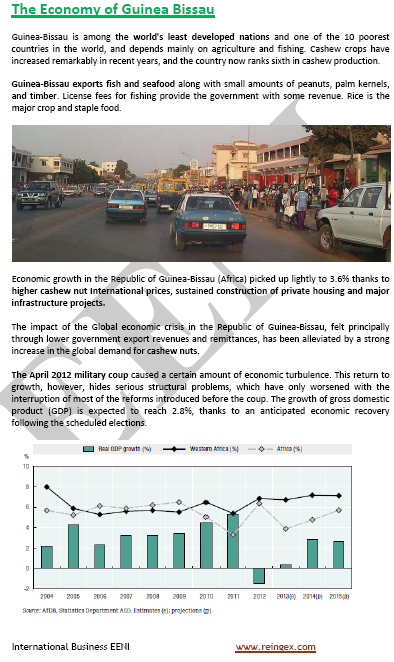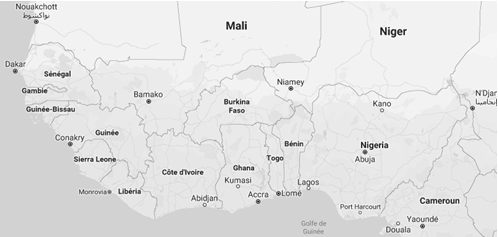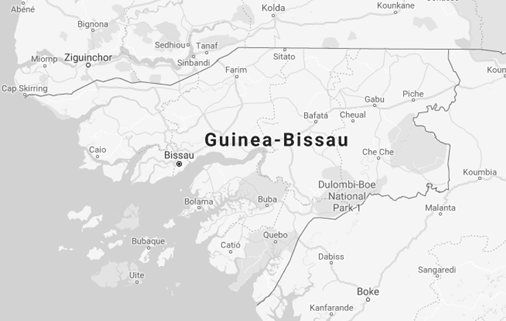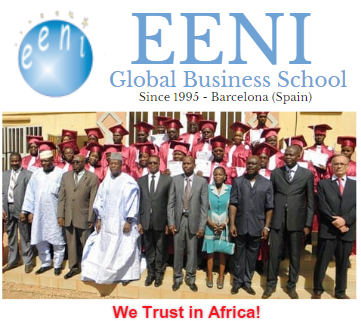Foreign Trade and Transport in Guinea-Bissau, Bafatá
Business in Guinea-Bissau (cashew nut), Bissorã, Bolama, Gabú, transport, tourism

Guinea-Bissau is a West African country
- Total Bissau-Guinean population: 1.7 million inhabitants
- The capital of Guinea-Bissau is Bissau (400,000 inhabitants)
- Main economic activity: cashew nut exports
- Bissau-Guinean natural resources: bauxite, wood, petroleum and phosphates
- The gross domestic product (GDP) per capita of Guinea-Bissau is one of the lowest in the world
- More than 66% of the population of Guinea-Bissau lives below the poverty line
- Currency of Guinea-Bissau: CFA Franc
Transport and Logistics
- Guinea-Bissau share borders with Guinea and Senegal
- Access to the Dakar-Lagos Transport Corridor
- Gambia-Senegal Highway


More information: International Trade and Business in Guinea-Bissau, at EENI Global Business School Website.

- Total Bissau-Guinean area: 36,120 km²
- Climate of Guinea-Bissau: tropical
- Calling code of Guinea-Bissau: 245
- Country code top-level domain: .gw
- Guinea-Bissau was part of the Kingdom of Gabu, as well as part of the Mali Empire

- Bissau
- Bafatá
- Gabú
- Bissorã
- Bolama
- Cacheu
- Bubaque
- Catió
- Mansôa
- Buba
The Republic of Guinea-Bissau is divided into eight regions:

- Bafatá
- Population of Bafatá: 225,000 inhabitants
- Area of Bafatá: 5,981 km²
- Capital: Bafatá
- Sectors of Bafatá:
- Bafatá
- Bambadinca
- Contuboel
- Galomaro
- Gamamundo
- Xitole
- Border of Bafatá with Senegal
- Cotton mill
- Biombo
- Population of Biombo: 97,000 inhabitants
- Area of Biombo: 838 km²
- Capital: Quinhámel
- Sectors:
- Prábis
- Quinhámel
- Safim
- Bolama-Bijagos (Illes)
- Population of Bolama-Bijagos: 34,000 inhabitants
- Area of Bolama-Bijagos: 2,624 km²
- Capital: Bolama
- Sectors:
- Bolama
- Bubaque
- Caravela
- Uno
- Cacheu
- Population of Cacheu: 193,000 inhabitants
- Area of Cacheu: 5,174 km²
- Capital: Cacheu
- Sectors:
- Bigene
- Bula
- Cacheu
- Caió
- Canchungo
- Sao Domingos
- Border of Cacheu with Senegal
- Gabú
- Population of Gabú: 215,000 inhabitants
- Area of Gabú: 9,150 km²
- Capital: Gabú
- Sectors:
- Boé
- Gabú
- Pitche
- Pirada
- Sonaco
- Border with Senegal
- Oio
- Population of Oio: 225,000 inhabitants
- Area of Oio: 5,403 km²
- Capital of Oio: Farim
- Sectors of Oio:
- Bissorã
- Farim
- Mansaba
- Mansôa
- Nhacra
- Border with Senegal
- Quinara
- Population of Quinara: 63,000 inhabitants
- Area of Quinara: 3,138 km²
- Capital of Quinara: Buba
- Sectors of Quinara:
- Buba
- Empada
- Fulacunda
- Tite
- Tombali
- Population of Tombali: 95,000 inhabitants
- Area of Tombali: 3,736 km²
- Border of Tombali with Guinea
- Capital of Tombali: Catió
- Sectors:
- Bedanda
- Cacine
- Catió
- Komo
- Quebo
And the autonomous sector of Bissau
Economic Organisations (Guinea-Bissau)
- West African Economic and Monetary Union (WAEMU)
- U.S.-WAEMU Agreement
- Economic Community of West African States (ECOWAS)
- Community of Sahel-Saharan States (CEN-SAD)
- OHADA
- African Union
- AUDA-NEPAD
- Economic Commission for Africa
- African Development Bank
Religion in Guinea-Bissau:
- Sunni Islam (50% of the Bissau-Guinean population)
- African Traditional Religions
- Christianity (10%)
Main languages and ethnicities Bissau-Guinean:
The official language of Guinea-Bissau is Portuguese (only 14% of the Bissau-Guinean population speak Portuguese)
The most spoken language is Creole Bissau-Guinean
- Creole Bissau-Guinean is recognised as a regional language
- 90% of the Bissau-Guinean population speak Creole Bissau-Guinean
The most important ethnicities of Guinea-Bissau are:
History of Guinea-Bissau
- 13th Century: Mandinka Kingdom of Gabou
- 1446: arrival of the Portuguese
- 1869: Portuguese colony
- 1953: war of Independence (Amílcar Cabral).
- Carnation Revolution
- Independence of Guinea-Bissau: 1973 (Portugal)
- 1998 - 1999: civil war of Guinea-Bissau
Higher Education in Guinea-Bissau
- Amílcar Cabral University
Guinea-Bissau is a member of the African and Malagasy Council for Higher Education (CAMES)
 Guinea-Bisáu
Guinea-Bisáu
 Guinée-Bissau
Guinée-Bissau
 Guiné-Bissau
Guiné-Bissau


 Tweet
Tweet